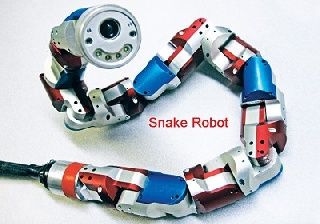Surgical robots have become increasingly common in modern medicine, offering a range of benefits such as improved precision, reduced pain and scarring, and shorter hospital stays. While surgical robots are already used for a variety of procedures, they are typically limited to operating within a small area and require the surgeon to control the movement of the robot. However, a new surgical robot that can roam freely inside the abdominal cavity has been developed, offering the potential for even greater precision and flexibility in surgery. This essay will explore the development of this new surgical robot and its potential applications in surgery.
Development of the Roaming Surgical Robot:
The development of the roaming surgical robot is a significant breakthrough in the field of surgery. This new robot is designed to move freely within the abdominal cavity, providing greater flexibility and precision in surgery. The robot is equipped with multiple arms and cameras that can be controlled remotely by the surgeon.
The roaming surgical robot is able to move through the abdominal cavity by using a series of small legs or tentacles. These tentacles are designed to be flexible and able to navigate around organs and tissues in the abdominal cavity without causing damage. The robot is also equipped with sensors that can detect the surrounding environment, providing real-time feedback to the surgeon.
Potential Applications of the Roaming Surgical Robot:
The potential applications of the roaming surgical robot are vast and varied. One potential application is in the field of gastrointestinal surgery, where the robot could be used to perform complex procedures such as bowel resection or gastric bypass. The robot's ability to move freely through the abdominal cavity could allow for more precise and efficient surgery, potentially reducing complications and recovery time.
The roaming surgical robot could also be used in the field of urology, where it could be used to perform complex procedures such as prostatectomies or bladder reconstructions. The robot's flexibility and precision could allow for more targeted surgery, potentially reducing the risk of complications and improving patient outcomes.
In addition to these applications, the roaming surgical robot could also be used in the field of gynecology, where it could be used to perform complex procedures such as hysterectomies or ovarian cystectomies. The robot's ability to navigate around the reproductive organs could allow for more targeted surgery, potentially reducing the risk of complications and improving patient outcomes.
Advantages of the Roaming Surgical Robot:
The roaming surgical robot offers several advantages over traditional surgical techniques. One of the key advantages is the robot's ability to move freely within the abdominal cavity. This flexibility allows for more targeted surgery, potentially reducing the risk of complications and improving patient outcomes.
The roaming surgical robot is also equipped with multiple arms and cameras, allowing for greater precision and flexibility in surgery. The robot's sensors can provide real-time feedback to the surgeon, allowing for more accurate and efficient surgery.
Another advantage of the roaming surgical robot is its potential to reduce the need for open surgery. By allowing for more targeted and precise surgery, the robot could potentially reduce the need for larger incisions and open surgery, resulting in less pain, scarring, and recovery time for patients.
Challenges of the Roaming Surgical Robot:
While the roaming surgical robot offers many potential benefits, there are also several challenges that must be addressed. One of the key challenges is ensuring the safety of the robot within the abdominal cavity. The robot must be designed to navigate around organs and tissues without causing damage, and its sensors must be able to accurately detect the surrounding environment.
Another challenge is ensuring that the robot is compatible with a wide range of surgical procedures. The robot must be able to adapt to different surgical situations and procedures, and its controls must be intuitive and easy to use for surgeons.
Conclusion:
The development of the roaming surgical robot is a significant breakthrough in the field of surgery. This new robot offers greater flexibility and precision in surgery, potentially reducing complications and improving patient outcomes. The potential applications of the roaming surgical robot are vast and varied, including in the fields of gastrointestinal surgery, urology, and gynecology.
The roaming surgical robot offers several advantages over traditional surgical techniques, including greater flexibility, precision, and the potential to reduce the need for open surgery. However, there are also several challenges that must be addressed to ensure the safety and effectiveness of the robot, including designing it to navigate around organs and tissues without causing damage and ensuring compatibility with a wide range of surgical procedures.
Overall, the development of the roaming surgical robot represents a significant step forward in the field of surgery, and has the potential to revolutionize the way in which surgery is performed. With continued research and development, the roaming surgical robot may one day become a routine part of surgical procedures, improving patient outcomes and advancing the field of medicine.
